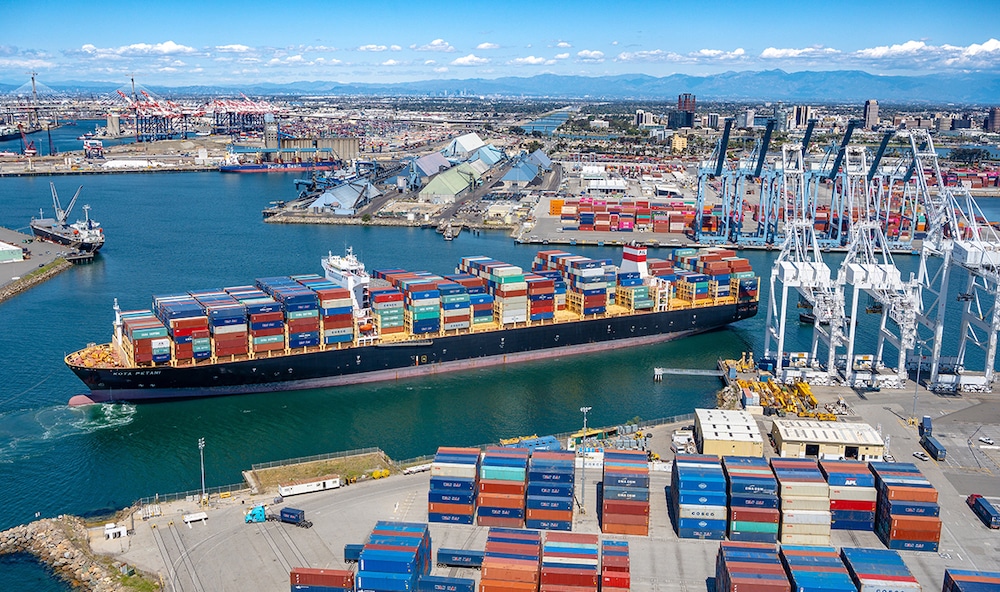Shipping Industry Faces Turbulent Waters Ahead

The global shipping industry is grappling with significant challenges as freight volumes and earnings decline. Eli Glickman, CEO of ZIM, expressed concerns about the lack of growth in transpacific freight, predicting continued pressure on rates for the second half of the year. Meanwhile, Japan’s exports to the U.S. have seen a sharp decline, further complicating the market landscape.
Japan’s Export Decline and Market Pressures
In July, Japan experienced its most significant drop in exports to the U.S. since the pandemic, with a staggering 10.1% decrease. This downturn was particularly pronounced in the automotive sector, where exports fell by 25% year-on-year, and automotive components dropped by 17%. Overall, Japan’s exports decreased by 2.6% compared to the previous year, putting pressure on the Nikkei stock market index and raising domestic political concerns.
As U.S. tariffs begin to take effect, the implications for Japan’s economy are becoming increasingly evident. The decline in exports not only affects trade balances but also raises questions about the resilience of Japan’s manufacturing sector. Analysts are closely monitoring these developments, as the ongoing trade tensions could lead to further economic repercussions.
In contrast, Ocean Network Express (ONE) reported a slight increase in transpacific volumes for Q1 of financial year 2025, carrying 672,000 TEUs from Asia to North America. This figure represents a marginal rise from the previous quarter but remains consistent with the same quarter last year. ONE attributed its performance to a temporary 90-day pause in tariffs, although it anticipates challenges ahead due to the reintroduction of tariffs. The company has cautioned that the global market environment remains uncertain, which could impact its full-year forecasts.
Freight Rate Volatility and Company Performance
Freight rates are experiencing significant volatility, particularly in the Pacific region. Rates from China to the U.S. West Coast have dropped by 10% over the past week and are down 25% over the last month, currently sitting at $1,744 per FEU. Similarly, rates for voyages from China to the U.S. East Coast have decreased by 21% week-on-week and 34% month-on-month, reaching their lowest levels since December 2023. This downward trend raises concerns about future utilization and volumes in the shipping market.
Despite these challenges, some companies are reporting mixed results. Maersk announced a 4.2% increase in volumes, primarily driven by exports from Asia, and upgraded its full-year EBITDA forecast to between $8 billion and $9.5 billion. However, the company also acknowledged the ongoing pressure on freight rates, which remain volatile compared to previous years.
CMA CGM reported stable revenues of $13.2 billion for Q2, matching the same period last year, but experienced a 7.9% decline in EBITDA. The company emphasized its diversification strategy in logistics and air freight as crucial for navigating the current geopolitical and trade uncertainties.
Hapag-Lloyd also noted a successful phase-in of its Gemini Cooperation despite the impact of U.S. tariffs, reporting a 4.5% increase in volumes driven by strong exports from the Far East. However, the company acknowledged that tariffs have led to a subdued peak season, reflecting the broader challenges faced by the industry.
As the shipping industry continues to navigate these turbulent waters, the outlook remains uncertain. Companies are adapting to changing market conditions, but the ongoing pressures from tariffs and fluctuating freight rates will likely shape the industry’s trajectory in the coming months.
